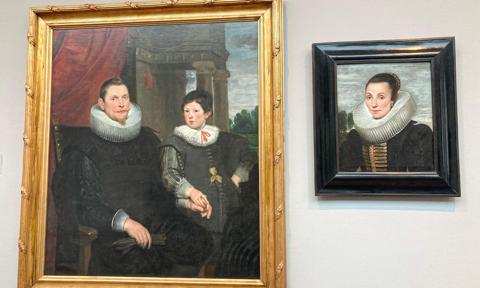
Art history enthusiasts, gather around. Two separate halves of an early 17th-century painting have gone on display for the first time and have reunited a family two centuries after they were torn apart mysteriously.
A famous painting by Flemish painter Cornelis de Vos, titled ‘Double Portrait of Father and Son’ has been a subject of curiosity by art historians over the years.
Painted in 1626, the artwork features a well-dressed man sitting for a portrait with his equally sharply turned-out son. The painter was known for being a favourite of the rich and wealthy families of the time and it was surmised that the duo in the painting belonged to an influential house. However, art sleuths noticed a mysterious shape on the lower right side of the painting which suggested a woman may have been present in the artwork at some point.
“You can see something in here. This is a dress and a knee underneath, and a part of the chair,” said Andrea Rygg Karberg, museum director of the Nivaagaard Collection Museum, in an interview with AFP.

After two centuries, the mystery has been solved and the woman, presumably the little boy’s mother, has been discovered and reunited with her family.
The discovery of the woman is also a fascinating story. The second half of the painting was previously titled ‘Portrait of a Lady’ and was known to be a separate work by de Vos. It was acquired by a Dutch gallery owner in 2024 after an auction who restored it and found a rural background behind the woman.
Serendipitously, art researcher Jorgen Wadum stumbled upon an article about the restoration on Google and discovered that the background matched the ‘Double Portrait of Father and Son’ that he had been studying. The fact that the two paintings belonged to the same era further confirmed their suspicions.
“It’s once in a lifetime that something like this happens. It’s extraordinary to find the missing woman from a family portrait,” Rygg Karberg explained.
Now the two halves of the same painting are displayed side-by-side at the museum in Denmark, a family reunited after 200 years.
Many museum-goers and art enthusiasts have mused about what could have been the reason for the woman’s separation from her family in the painting, but experts have concluded that the canvas must have been damaged by natural elements and the two halves would have been separated because of that.
The discovery of the woman in the painting leads to the most important question of the hour: How many paintings have we seen around the museums that look whole but are, in fact, incomplete?






